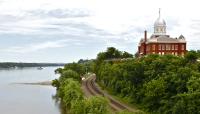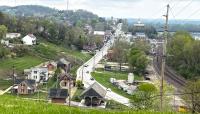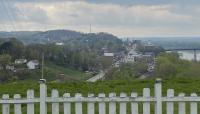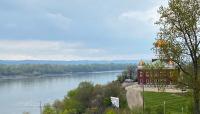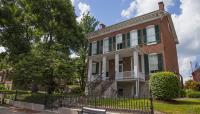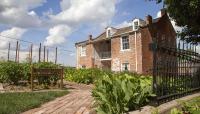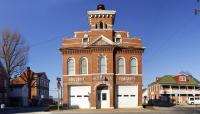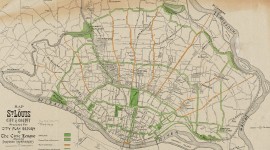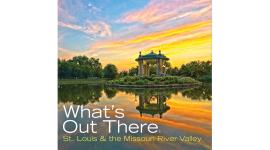Established in 1838 by the German American Settlement Society, the historic core of the town of Hermann, 80 miles west of St. Louis, includes a concentration of buildings noteworthy as early examples of Missouri German architecture and characteristic of German American community development in Missouri. The Society sold shares to prospective settlers with the intention of founding a German colony in a rural area isolated from other populations and influences, where German language and cultural traditions could be easily preserved. The topography of Missouri’s Gasconade County was thought by the Society to resemble that of the Rhine River Valley and therefore selected for the Society’s colony. Hermann was laid out by the Society in a Philadelphia plan grid with Market Street as its spine, perpendicular to the Missouri River. Beginning with First Street along the river bluff, uniformly sized blocks were constructed progressively inland, at first lined by grand public buildings and elegant homes and later by more modest commercial and residential buildings. Many of the earliest structures were built of brick in Classical Revival styles, though architectural details vary widely. Despite an initially difficult adjustment to the realities of life on the frontier, settlers in Hermann eventually succeeded in establishing a thriving viticulture industry, with most of Hermann’s residents employed in this industry by 1850. The slow but steady economic development of the town, coupled with its intentional cultural isolation, impeded large-scale residential or commercial development, allowing the oldest areas of the community to remain intact. An area six blocks long and four-and-a-half blocks wide, irregularly bordered by Wharf Street, Mozart Street, and Reserve Street, includes more than one hundred historic buildings listed in the National Register of Historic Places in 1972 as the Hermann Historic District. Included in the district, the Pommer-Gentner House (1848) and adjacent Strehly House and winery (1869) comprise the Deutschheim (“German home”) State Historic Site, with interpretive gardens portraying connections between life and landscape on the frontier.
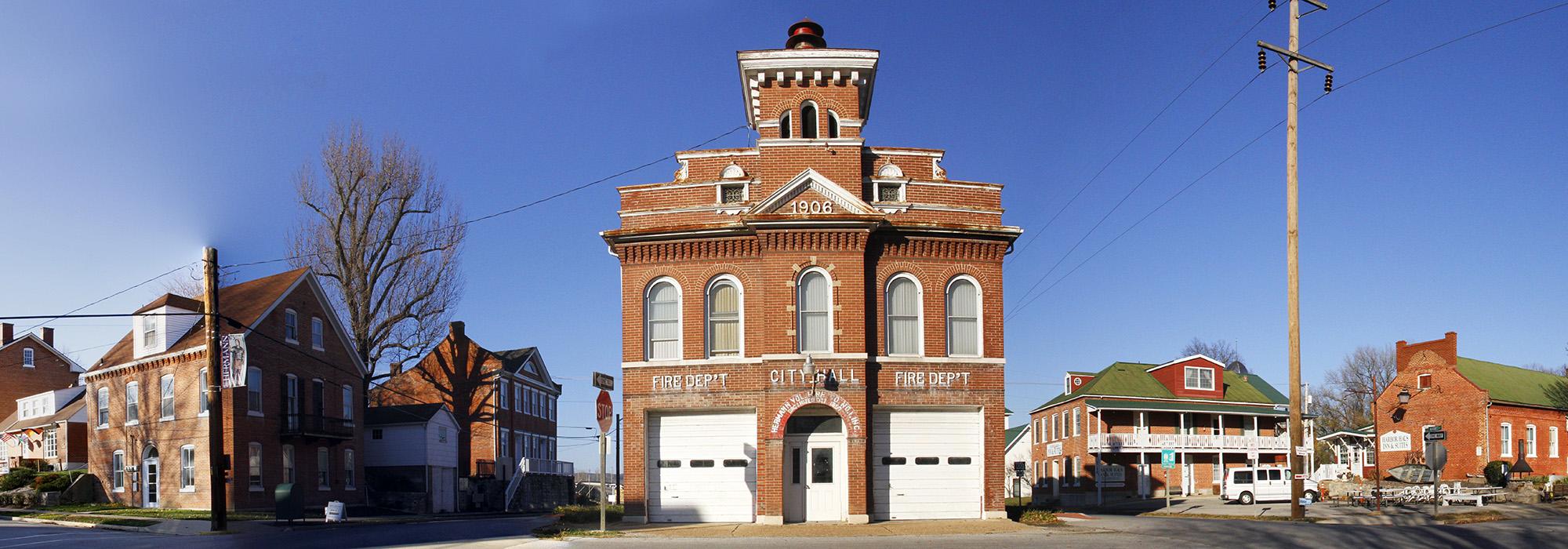
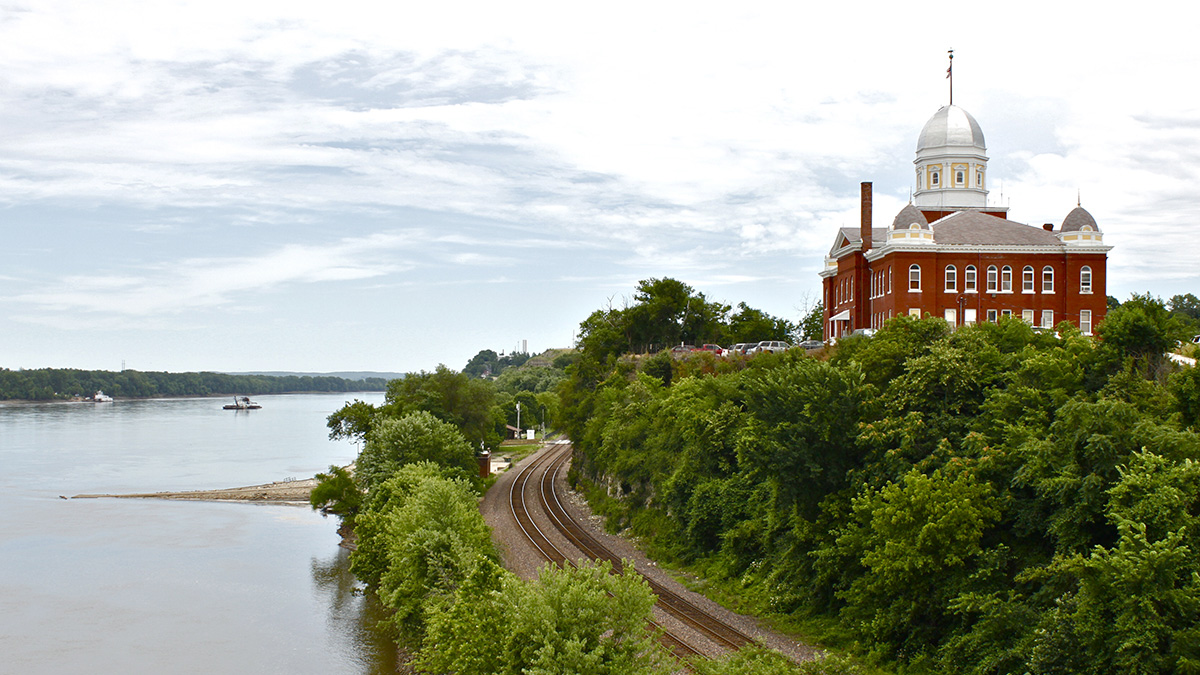
Hermann,
MO
United States



